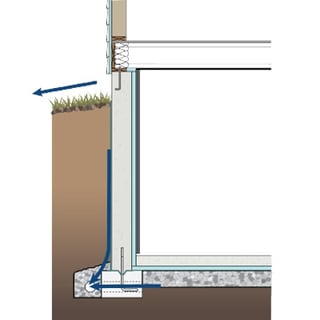Whether you’re building new construction or working on a renovation, you’ve got to think about preparing for and preventing the impact of water on the structure of the home. Because without your expertise, homes can easily have a drinking problem -- and the water they absorb can be downright destructive.

What Water Can Do
Moisture flow in a building has a significant impact on occupant health and safety. Not to mention comfort, building durability and even your own liability as a builder. In fact, according to the American Insurance Association, water damage is the second most frequently filed insurance claim in the U.S., with water damage claims growing faster than other component of homeowner insurance. Almost 40% of all homeowners have said that they have experienced loss from water damage.1
Types of Moisture
There are two main forms of moisture to manage in a home: liquid and vapor. Liquid water moves as bulk water and through capillary action; water vapor moves through air leakage and diffusion. More specifically:
- Bulk moisture movement (typically rain, snow and flowing groundwater) requires a hole in the building envelope and a driving source such as wind or gravity. It can be controlled by directing it away from the home and by sealing any holes where water might enter.
- Capillary action, better known as wicking, is the ability of water to travel up against the pull of gravity through a porous material, like concrete, brick or wood. Powerful and difficult for occupants to detect, capillary water damage is often found in basements and crawlspaces, and above-grade on lapped wood siding.
- Air-transported moisture can move through a building due to wind, fans and air handlers, or leaky ductwork, resulting in condensation. Condensation forms with slower-moving air and on colder surfaces (like windows and poorly-insulated walls).
- Vapor diffusion. Even without leaks, small amounts of moisture in the form of water vapor can pass directly through a building’s envelope via a process called diffusion. Vapor diffusion from a damp or wet basement or crawlspace into the living space can significantly increase the moisture levels inside a home, affecting indoor air quality.
If you don’t want your new construction or renovation to end up with a destructive “drinking problem,” managing these forms of moisture flow is critical. Moisture management is just one part of a whole-house systems approach that can create better homes for today’s homeowners.
Want more specifics about managing moisture, heat and air flow in homes? Download our Building Science 101 guide for more information and suggested solutions.
1 http://www.simplyjustice.com/water-damage-statistics





